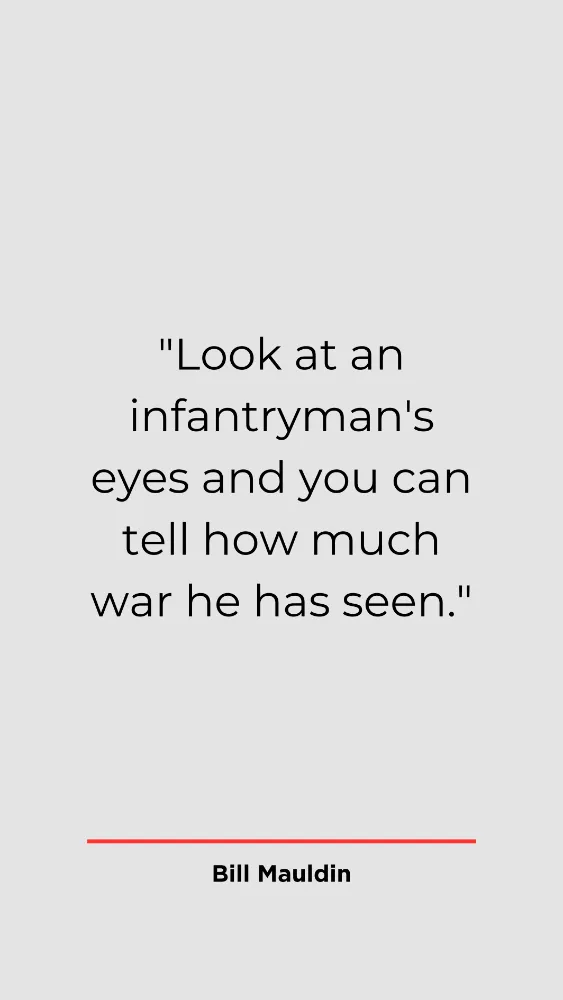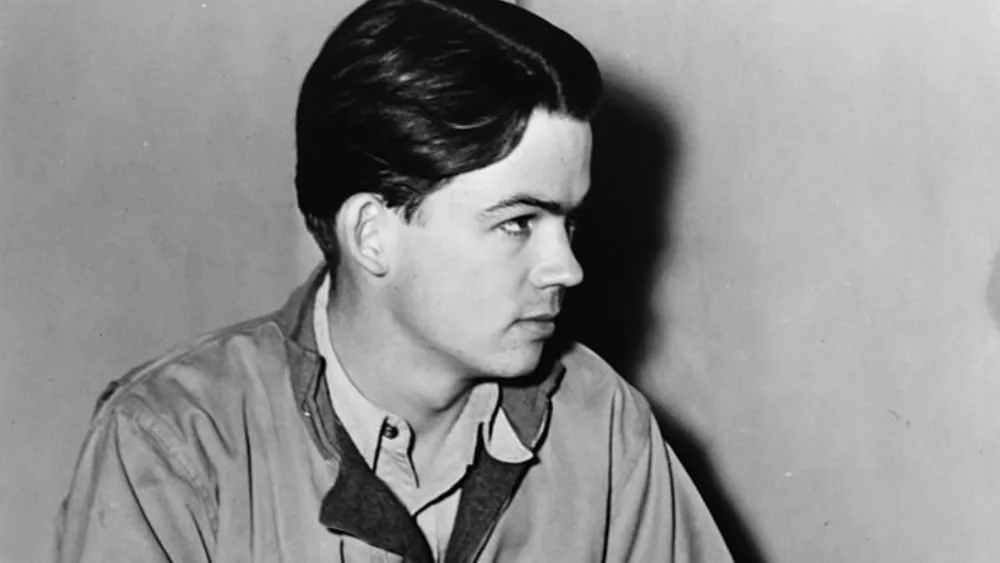Bill Mauldin’s work was celebrated not only for its artistic prowess but also for its courageous spirit. He fearlessly tackled subjects that were often deemed too sensitive or controversial. These subjects included the consequences of poor leadership and the emotional toll of combat. Moreover, they involve soldiers’ struggles to maintain their humanity amidst the chaos of war.
This unapologetic approach to his craft made him a hero to the troops and a thorn in the side of military brass who were uncomfortable with his candid portrayals.
Mauldin’s cartoons were published in the widely circulated military newspaper, “Stars and Stripes,” further expanding his reach among soldiers. His art was a testament to his ability to encapsulate the soldier’s life in a few strokes of a pen. It depicted everything from the exhaustion of endless marches to the shared laughter in foxholes.
As WWII progressed, Mauldin’s work became even more vital. His cartoons reminded those on the home front of the sacrifices made by their loved ones overseas. They humanized the soldiers, making them more than just distant, anonymous figures in uniform.
Early Artistic Roots in Mountain Park, New Mexico
An insatiable curiosity and a deep love for drawing marked Bill Mauldin’s early years. He grew up in the landscapes of Mountain Park, New Mexico. Soon, Bill found inspiration in the natural beauty that surrounded him.
His father, a man of vision, recognized young Bill’s talent and encouraged his artistic pursuits. It was under the guidance of his father that Mauldin’s passion for drawing began to take root. Therefore, it set him on a path that would eventually change the course of wartime journalism.
As a teenager, Mauldin’s family relocated to the bustling city of Phoenix, Arizona. This transition marked a pivotal chapter in his artistic journey. Here, in the heart of the Sonoran Desert, he found new opportunities to refine his craft.
His determination to excel in cartooning led him to contribute his witty and incisive cartoons to the Phoenix Union High School newspaper. Even at this early stage, his unique artistic voice began to emerge.
The Soldier Cartoonist
In 1940, as the rumblings of war were becoming increasingly palpable on the world stage, Bill Mauldin took a significant step that would forever alter the course of his life. Enlisting in the Arizona National Guard, he embarked on a journey that would transform him from an aspiring cartoonist into a wartime legend.
Assigned to the 45th Infantry Division, Mauldin found himself amidst the ranks of fellow soldiers preparing for the inevitable challenges of global conflict. His time in uniform gave him an intimate understanding of the soldier’s daily life. Furthermore, it gave him the hardships, the camaraderie, and the often-overlooked moments of levity amidst the chaos.
It was during his military service that Mauldin’s artistic talents caught the discerning eye of his superiors. Recognizing his ability to capture the essence of the soldier’s experience with a pen and paper, his commanding officers made a momentous decision.
Soon, they assigned him the role of cartoonist for the division’s newspaper, the “45th Division News.” This seemingly modest role would be the crucible in which Mauldin would forge his artistic legacy.
Willie and Joe: The Everyman Soldiers
Willie and Joe, through Bill Mauldin’s skilled pen, transcended the pages of a newspaper to become living symbols of the common GI. In their rumpled uniforms and askew helmets, they bore the weight of war with unflinching honesty. Their weary expressions mirrored the exhaustion that permeated the front lines of battle.
Mauldin’s cartoons did not seek to glamorize or romanticize war; instead, they peeled back the layers to reveal the raw, unvarnished truth.
The mud and rain that clung to Willie and Joe’s boots and uniforms were artistic details and tangible reminders of the harsh conditions soldiers endured. This unrelenting commitment to realism struck a chord with those who had experienced war firsthand.
Willie and Joe became more than mere cartoons for the soldiers who saw themselves in these inked characters. They were reflections of their struggles, fears, and hopes.
Soldiers saw their complex emotions reflected in Willie’s determination and Joe’s wry smile.
Legacy beyond WWII
Bill Mauldin’s impact during World War II was not confined to the front lines or military bases. His art transcended geographical boundaries and touched the hearts and minds of civilians back home.
Through the pages of newspapers and magazines, his cartoons offered a unique window into the soldiers’ lives. Moreover, it provides a glimpse of the sacrifices and hardships they endured.
Mauldin’s work became a powerful bridge of empathy for those on the home front, connecting them with the troops fighting on distant battlefields. While civilians might not have experienced the horrors of war firsthand, they could vicariously witness the struggles, fears, and moments of camaraderie.
This is through the inked depictions of Willie and Joe. Mauldin’s cartoons humanized the soldiers, making them more than faceless heroes in uniform; they became sons, brothers, and friends risking their lives for a greater cause.

The Continuing Creative Journey of Bill Mauldin
Following the end of World War II, Bill Mauldin’s artistic journey did not end. Instead, he embarked on a new career chapter, showing his unwavering commitment to his craft and the causes he held dear.
Mauldin’s talent and reputation as a cartoonist grew exponentially in the post-war years. He lent his distinctive artistic voice to several publications. This includes the Chicago Sun-Times, where his work continued to captivate and provoke thought.
Even outside of combat, his cartoons remained incisive and keen observations of humanity.
Bill Mauldin and his Impact on the WWII Generation
We cannot overstate Bill Mauldin’s contribution to the WWII. Through his poignant and honest cartoons, he captured the essence of the American soldier’s experience. Moreover, it gave voice to those who often went unheard.
His legacy lives on in the annals of art and journalism and in the hearts and minds of those who served during WWII. Bill Mauldin will forever be remembered for his unwavering commitment to depicting the human side of war.








